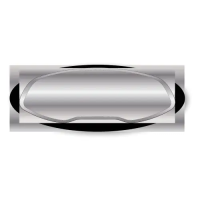(highwayorsandysoilroad),road
conditions(wet,dry,frozen),tyre
tread,brakecondition,vehicle
weightandbrakeforce.
Avoiddepressingbrakepedal
suddenlyatunnecessarytime.Some
driversdriveirregularly,suchas
depressingthebrakepedalshortly
afterdepressingtheacceleration
pedal,insteadofkeepingpacewith
thevehicleflow.Thisisanincorrect
practice.Thebrakecannotget
cooleddownincontinualemergency
brakes.Frequentdepressingof
brakeirregularlymayspeedupthe
wearofthebrake.Keepingpace
withvehicleflowwithacertain
distancemay greatlyreduce
unnecessarybrakes, whichcan
improvebrakeeffectandlengthen
theservicelifeofthebrake.
158
Turningunderemergentconditions
Sometimesturningismoreeffective
thanbrake.Forexample,youclimb
upaslopetofindthatabigtruckis
parkinginyourlane,oranother
vehiclecomesinfromsomewhere,
orachildrushesoutfromparking
vehiclesandstopsjustaheadofyou,
youmayusebraketoevadethese
obstacles,providedthatyoucanstop
yourvehicleintime.Sometimesyou
areunabletoachieveitasthereis
notsufficientspace.Atthistimeyou
needtotakeevadingmeasuresto
passaroundtheobstacles.
Undertheseemergentsituations,
yourvehiclewillpresentitspreemin
-entperformance.Firstdepress
brakepedal.RefertoBrakeinthis
chapter.
Youhadbetterdecelerateyour
vehicleifacollisionislikelytooccur.
Thenpassaroundtheobstacleby
turningtotheleftorrightaccording
toexistingspace.
Highconcentrationanddecisionare
requiredunderthisemergent
situation.Ifyouholdthesteering
wheelat9o'clockand3o'clock
positionsaccordingtotherecomm
-endedmethod,youcanturnthe
steeringwheelquicklyby180
degreeswithoutmovingahand.
Youmustdoitquicklyandturn
swiftly,andbringthewheelsto
normalpositionafterevadingthe
obstacle.
Infact,besuretodrivecautiously
withthesafetybeltfastenedsince
suchemergentsituationmayoccur
anytime.

